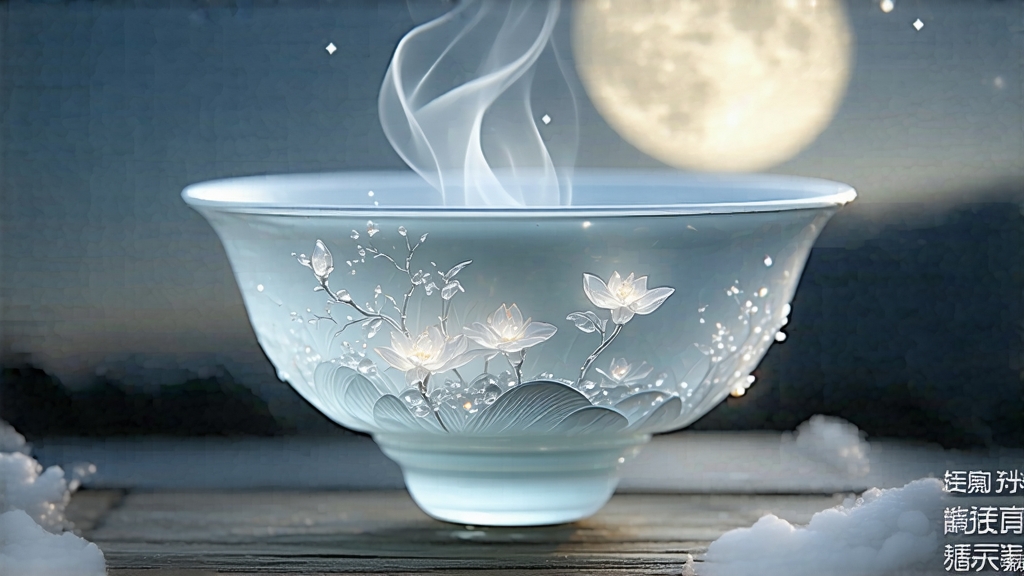
Among the six great families of Chinese tea, white tea is the least theatrical yet the most elusive; it is the scent of a breeze that has passed through a bamboo grove and carries away the memory of flowers. Within this family Bai Hao Yin Zhen—“Silver Needle,” “White Down Silver Tip”—sits on the throne, the purest expression of leaf, air, and time. To understand it is to watch moonlight condense into a liquor that tastes like the first inhalation after rain.
-
A legend written in down
The written record begins in the Song dynasty (960-1279), when the imperial court demanded “white tribute tea” pressed into cakes stamped with dragon-phoenix motifs. Those cakes, however, were green teas whose buds had been coated with a silvery wash; the true white tea craft, leaving the leaf un-baked and un-rubbed, matured later in Fujian’s coastal mountains. By 1796 the county of Fuding, startled by the clarity of its own springs, began to present loose, intact buds to the Jiaqing Emperor; the modern Silver Needle was born. Villagers still tell a quieter story: that the tea is the moon’s dowry, collected only on pre-dawn mornings when dew and starlight are indistinguishable. -
Geography of serenity
Authentic Bai Hao Yin Zhen is restricted to three micro-zones: Fuding, Zhenghe, and Jianyang, all within northern Fujian. The region’s red sandy loam is laced with volcanic tuff; the East China Sea sends nightly fogs that slow the sunrise and wrap tea gardens in a humid cocoon. The cultivar of choice is Fuding Da Bai Hao—“Big White Down”—a large-bud variety whose single tip can outweigh three ordinary buds. Its cell walls are thick with amino acids, storing the gentle broth that later unfolds like silk. -
The craft of doing almost nothing
Picking begins when the last star fades but before the sun paints the horizon; buds must be unopened, 2.5–3 cm long, and wearing their full ermine coat. Touch is minimal: gloves of bamboo fibre, baskets lined with muslin. No crushing, no kneading, no firing. The buds are simply laid on bamboo trays stacked in pine-wood sheds where the only fuel is air. For 36–48 hours they wither, losing moisture in slow motion while enzymes whisper new aromas into being. On the second night the maker may open skylights, inviting the moon to cool the leaf; by dawn the buds have curled into tiny quills the colour of antique ivory. A final desiccation at 40 °C locks in stability without waking the sleeping catechins. The entire process is a negotiation between meteorology and intuition: too much wind and the down turns ochre, too little and the tea will later sour. -
The five inflections of leaf law
Imperial grade: buds plucked within three days of Qingming, needle-straight, 100 % downy.
First grade: still pre-Qingming, but 5 % may show a faint crook.
Second grade: post-Qingming, down slightly thinned, aroma more hay than nectar.
Third grade: mixed with one unfolded leaf, brisk yet less luminous.
Garden grade: machine-picked, uniform in size but already mourning its lost moonlight.
Each level demands its own water temperament. -
Water, vessel, and the breath of patience
Use spring water low in minerals; if none is at hand, filter and rest the water overnight so chlorine can evaporate. Heat to 75 °C—when tiny crab-eye bubbles cling to the kettle bottom. A glass gaiwan (120 ml) is ideal: it lets you watch the needles stand upright like a school of silver fish, then drift into horizontal repose. For every gram of tea offer 30 ml of water; a first infusion of 45 seconds releases a pale chartreuse liquor tasting of fresh almond and cucumber skin. Subsequent steeps add five seconds each; the fifth is often the quietest, a whispered secret you lean forward to catch. Silver Needle does not shout; it murmurs, and the murmur lingers on the teeth like cool jade. -
Tasting as meditation
Begin with the dry aroma: bury your nose in the warmed gaiwan and inhale slowly—notes of l